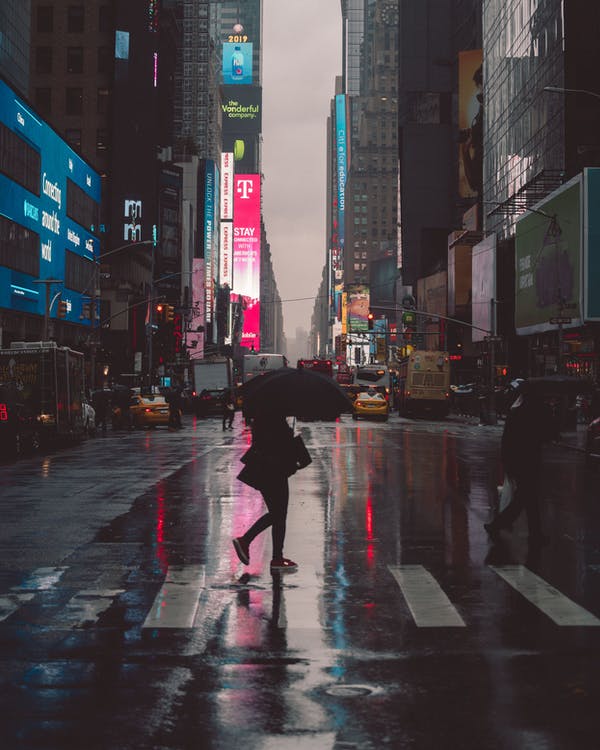During the Autumn and Winter seasons, daytime is shorter and it gets dark earlier. While this may seem like an ordinary seasonal change, it brings many dangers for pedestrians in the U.S. Walking during these darker earlier months increases the likelihood of pedestrians getting injured by car drivers. Therefore, you should exercise extra care when walking, especially in urban areas. In this article, vehicle crash attorneys in the Philadelphia region explain more about pedestrian accident statistics and tips for safety when walking during darker earlier months.
Pedestrian Accident Statistics
Pedestrian accidents happen more than you may think. These types of crashes are responsible for causing severe injuries such as brain injuries, back injuries, and wrongful deaths. According to the National Highway Traffic Safety Administration (NHTSA), thousands of pedestrians die in the U.S. every year. As reported by the NHTSA’s 2016 Traffic Safety Facts report, 5,987 walkers lost their lives in traffic crashes in the U.S. The number of pedestrian fatalities has been increasing over the years. For instance, according to the NHTSA’s 2016 report mentioned before, in the U.S. there were:
- 4,818 pedestrian deaths in 2012
- 4,779 pedestrian fatalities in 2013
- 4,910 pedestrian deaths in 2014
- 5,495 pedestrian deaths in 2015
Conforming to North Carolina’s 2017 Traffic Crash Facts Report, hundreds of pedestrians have lost their lives in car accidents within the State. As stated by North Carolina’s report, in 2017, 200 walkers lost their lives in vehicle-related crashes. Furthermore, 8.9% of all pedestrians involved in motor vehicle accidents lost their lives in North Carolina during 2017.
There are specific hours of the day when pedestrians are more likely to experience an accident. According to the NHTSA, in the U.S. 26% of all pedestrian fatalities occurred between 6:00 P.M and 9:00 P.M in 2016. This means pedestrians are at higher risk of being injured or killed by a vehicle during night time.
Safety Tips for Pedestrians When it Gets Dark Early in Winter
There are significant safety measures you need to be aware of whenever you decide to go for a walk late in the evening or at night. For instance, you should always stay alert at all times when walking, especially in urban settings. Today more than ever, pedestrians and drivers can be easily distracted. One of the most common distractors for pedestrians and drivers is the smartphone – although many other things can distract you from paying attention to the road. It is crucial to pay attention to the road to avoid any potential accident.
One of the safest ways to prevent a pedestrian accident is by following traffic rules and signs. Being alert, following traffic laws, and anticipating what a driver may do, can increase your safety. Never assume drivers will follow traffic rules. Instead, take the necessary precautions before attempting to cross a street or intersection even if you have the right of way.
Make yourself visible at all times. This means you should always walk in safe, well-lit places to avoid unnecessary risks. Do not walk in highways or roadways where pedestrian access is prohibited. You should still walk through areas where drivers expect the presence of pedestrians such as crosswalks and sidewalks.
What Can a Pedestrian Do After Being Hit by A Car?
Many pedestrians may not know what they should do if they get involved in a car accident. Many pedestrian accidents happen due to negligent actions of a driver. Other times, an unsuspecting pedestrian can get injured as a result of a collision involving two or more vehicles. In such cases, you may be able to file a personal injury claim against the at-fault parties.
If you can prove the liable parties were negligent, and their negligence caused you harm and losses, you can obtain compensation. Essentially, you will need to demonstrate the following elements:
- The defendant owed you a duty of care
- The defendant breached their duty of care
- The breach of duty caused you harmed
- You suffered damages
If you are successful, you can obtain compensation for your medical expenses, lost wages, loss of earning capacity, pain, and suffering. Depending on the actions of the defendant, the court may award additional damages such as punitive damages. A skilled, knowledgeable lawyer can help you hold the liable parties accountable for your injuries.

